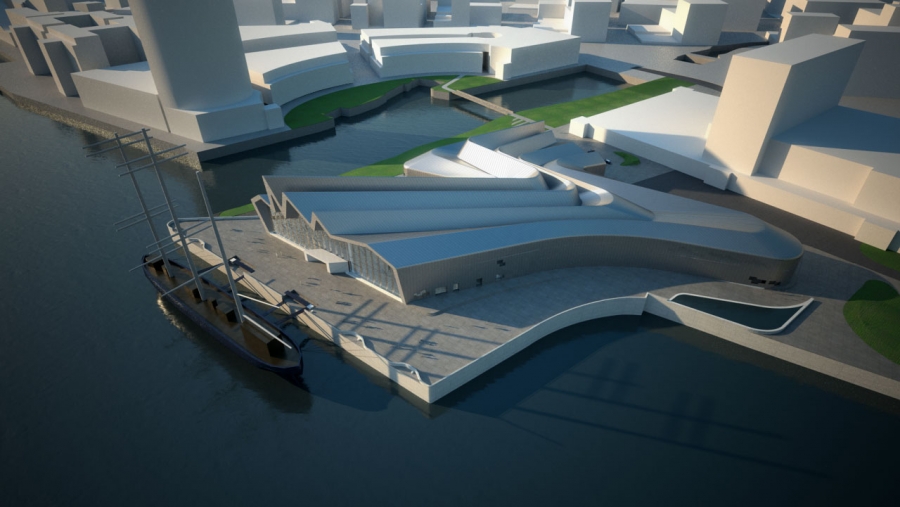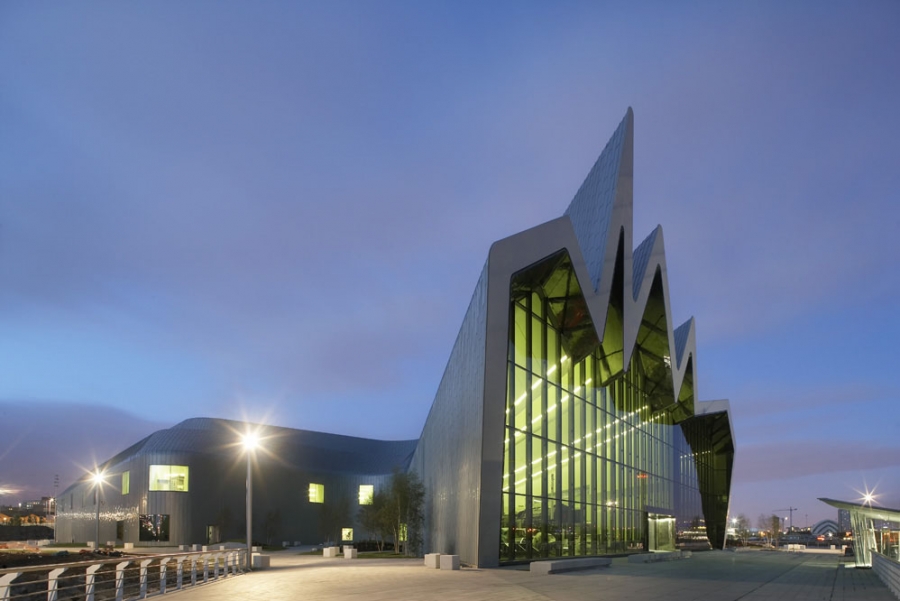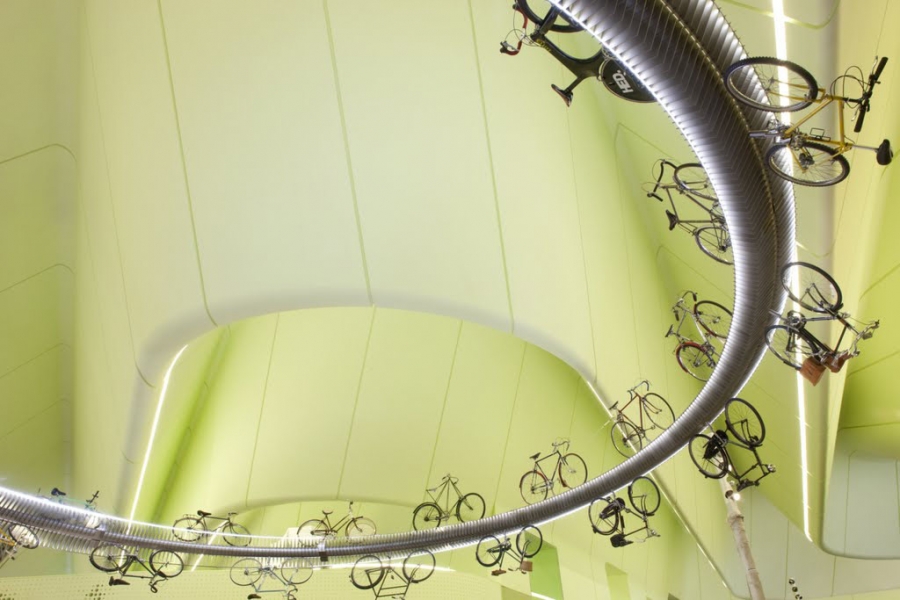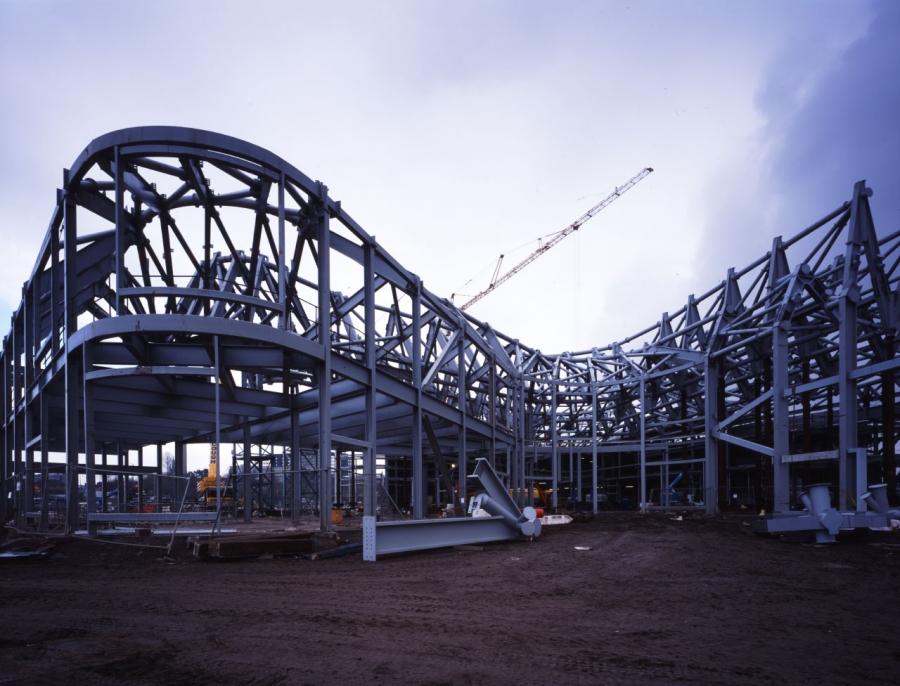DHA Design illuminates Glasgow’s Riverside Museum of Transport and Travel. This third article in Buildipedia’s five-part series on the Riverside Museum gives an in-depth look at the building’s lighting design.
In 2006, lighting consultancy DHA Design in London was appointed by exhibit firm Event Communications as the lighting designer for the iconic Riverside Museum of Transport in Glasgow, Scotland. For approximately three years, the two firms worked closely to design a lighting plan that would not only embrace architect Zaha Hadid’s overall vision and concept for the museum but also would complement the exhibition layout, which features more than 3,000 objects, films, photographs, and personal testimonials that reveal the vibrant history of the city of Glasgow.
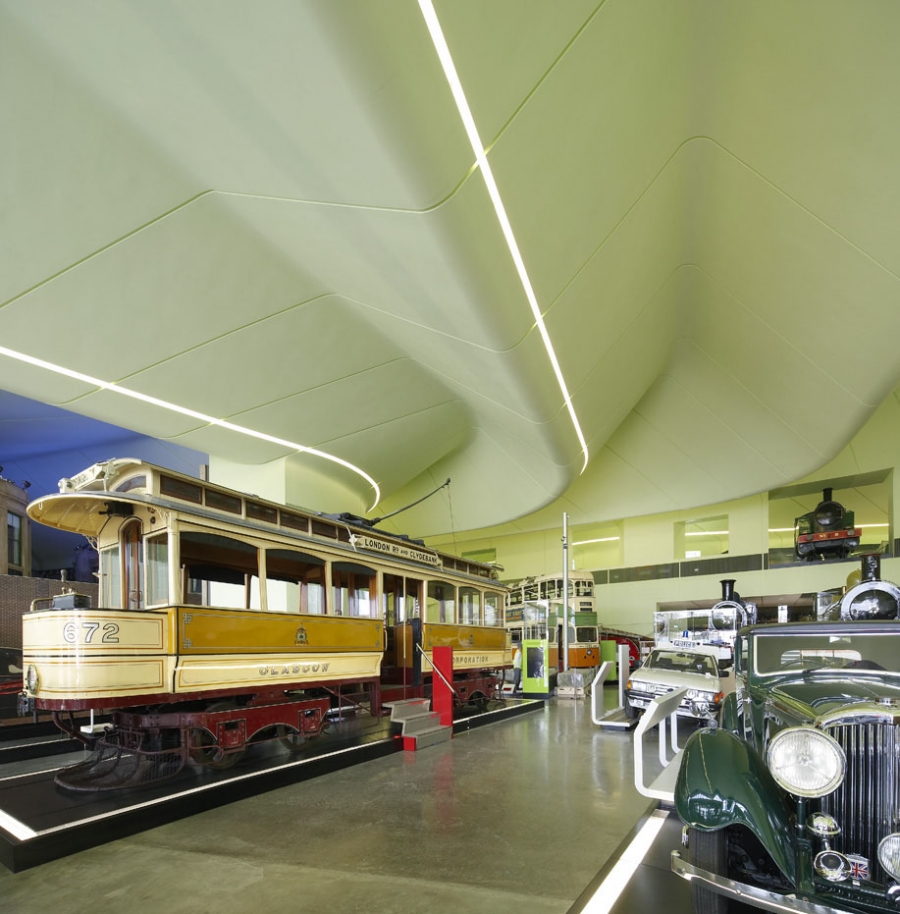 Image courtesy of Hufton + Crow
Image courtesy of Hufton + Crow
“Our goal was to design a display lighting system, predominantly ground mounted, that would provide suitable highlights and contrast to the exhibits and collections,” says Adam Grater, managing director of DHA Design. “DHA was also tasked to design lighting for a number of showcases and key attractions within the museum, such as the suspended Bicycle Velodrome, the Wall of Cars, and a Victorian street.”
According to Grater, the museum lighting plan utilizes several hundred LEDs, fluorescent and metal halide lights, which took approximately eight months to install. “Although some of the exhibits are very light-sensitive, the majority are quite robust,” says Grater. “The lighting is calculated to meet conservation requirements and is low-energy and low-maintenance.”
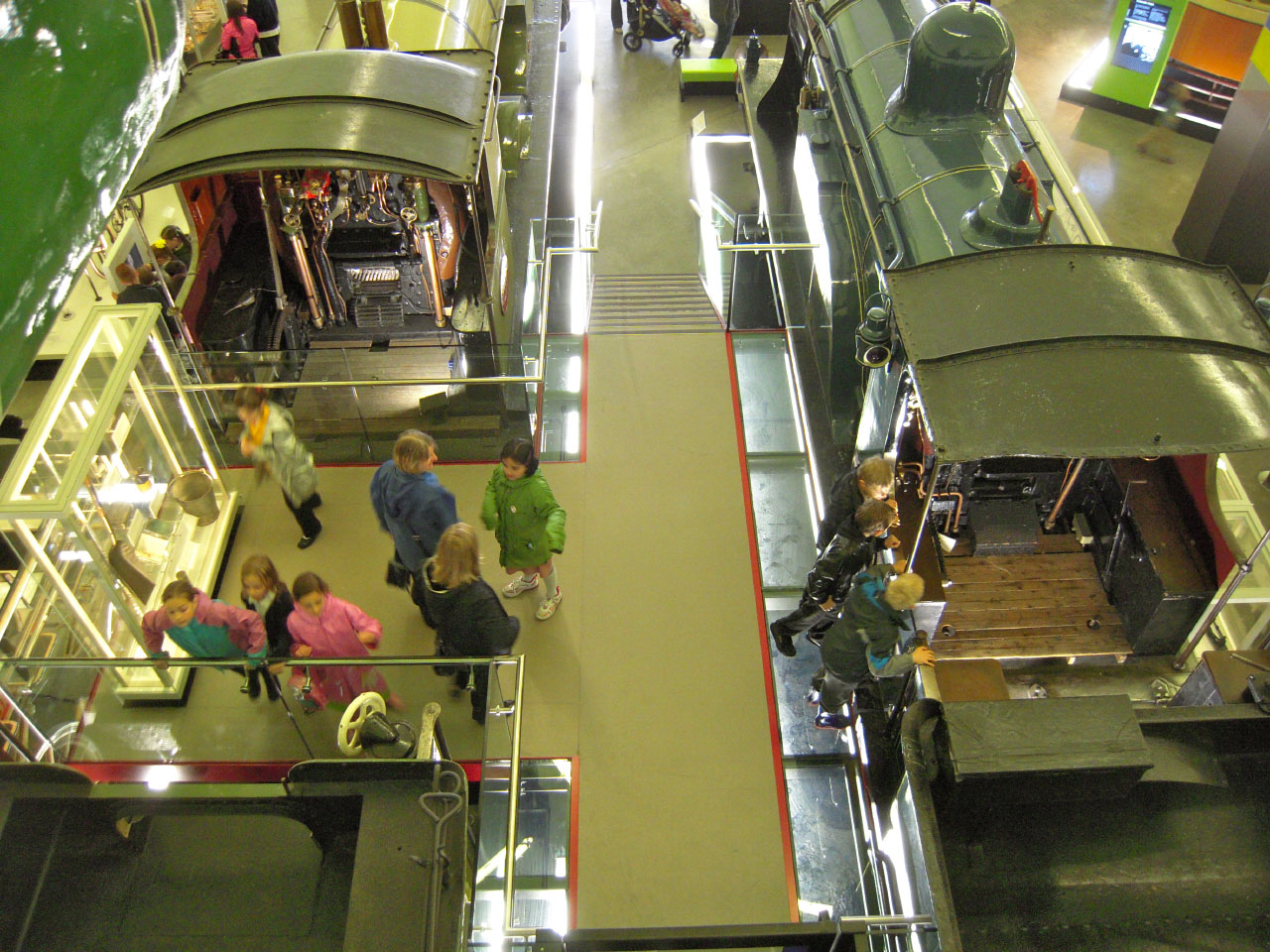
Upon being awarded the project, DHA Design’s first challenge was to evaluate existing light sources. The building already offered ambient natural light from large glass windows on the north and south facades, as well as cold cathode lighting, which had been designed by Inverse Lighting. “With daylight entering the exhibition spaces from both ends of the building, blending the various light sources was a challenge,” says Grater.
To solve this challenge, DHA Design set the color temperature of the cold cathode to 4500 degrees, fluorescent lighting to 4000 degrees, and LED and metal halide to 3000 degrees. “The resulting balance in both terms of color and light levels works well, rendering the natural colors of the objects and allowing the changing play of light through the building to be enjoyed as the day progresses,” he says.

In addition to creating the ground-mounted lighting system and key attraction lighting, DHA also created a “flexible display system” that wraps around and supports key objects throughout the museum. The modular system allowed DHA to utilize both recessed and extension accent lighting within the units and also serves as an effective method for clearly illuminating detailed aspects of the exhibits, such as running gear and pistons.
“With the flexible display system, the client was very keen that these objects should be seen in context, because all the displays are themed with stories that are pertinent to these objects,” says Grater. “Graphics, showcases, smaller display plinths, and barriers are all housed within the buildup of the display structures – rather like a large Lego set – allowing layers of information to be juxtaposed.”
“Yet the most rewarding aspect is seeing the finished result, which is a testament to the numerous teams of talented people who contributed to the design process.” Adam Grater, managing director of DHA Design
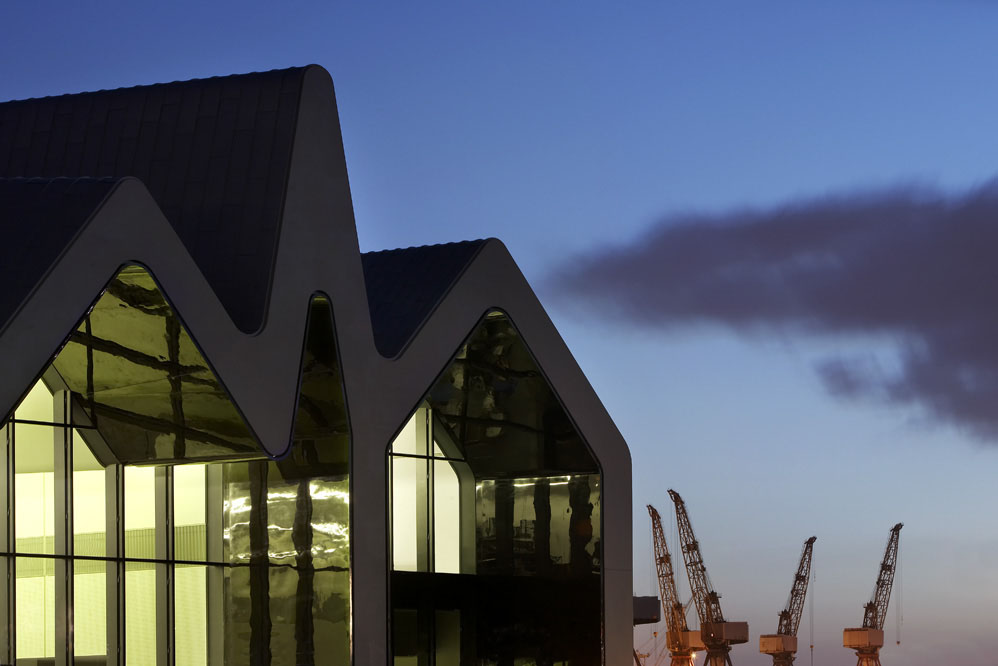
Throughout the design and installation process, Grater met often and worked collaboratively with the exhibition designers, manufacturers, and suppliers. “I suppose one of the most challenging aspects of the project is making your bit fit within all these different disciplines,” he says. “Yet the most rewarding aspect is seeing the finished result, which is a testament to the numerous teams of talented people who contributed to the design process.”
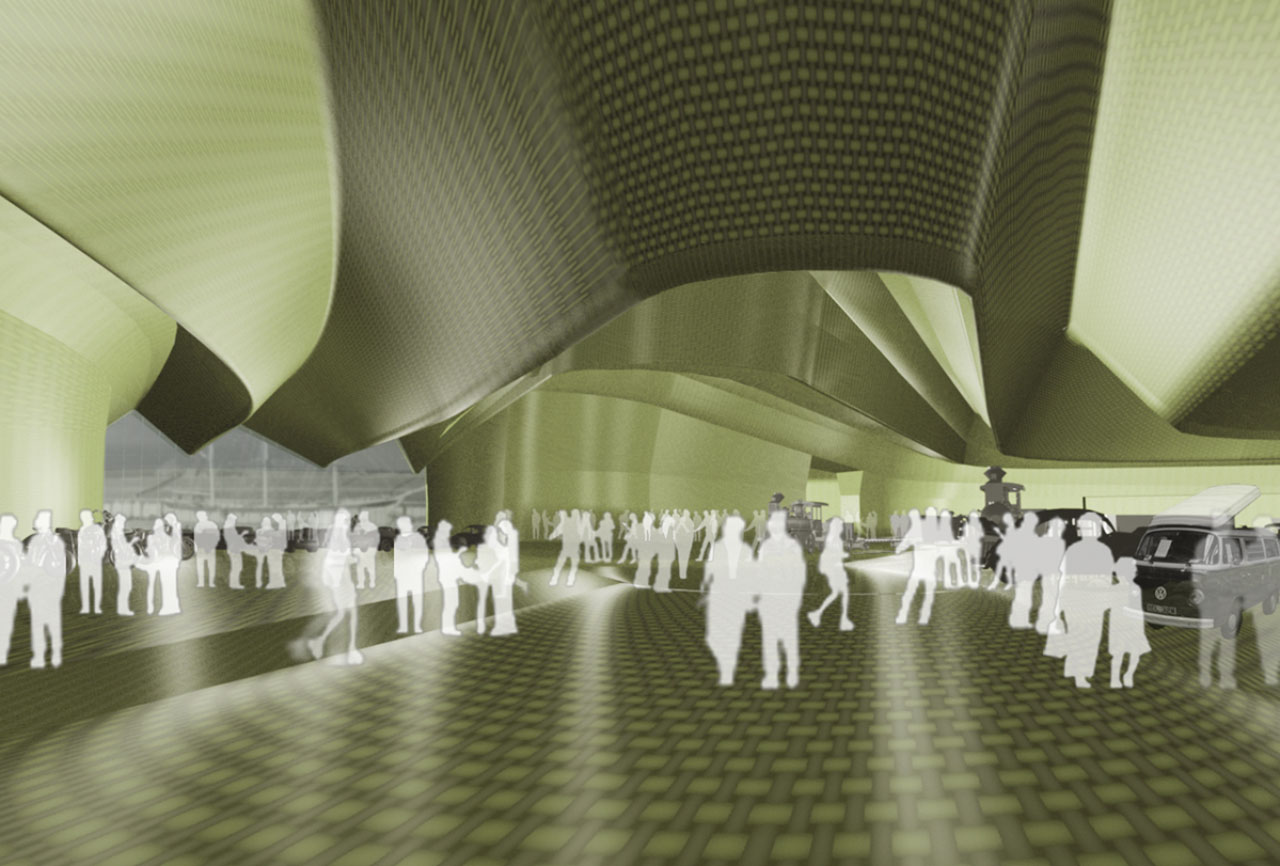
This is the third in Buildipedia’s five-part series examining the design and engineering of Glasgow’s Riverside Museum of Transport and Travel.

Lisa Taylor Minor
Lisa Taylor is a freelance writer and marketing consultant. She has more than 16 years of experience as a communications professional and has worked with a variety of companies in the home products and building materials industry. Originally from Memphis, TN, Lisa earned a BA in Journalism from the University of Memphis in 1995 and a MA in Journalism from the University of Memphis in 1997. She spent the first 11 years of her career working in account service for Memphis advertising agencies Thompson & Company, Oden Marketing & Design, and Carpenter/Sullivan. Lisa then spent five years in Nashville, TN, with The Buntin Group, an Adweek Top 100 U.S. advertising agency, and Louisiana-Pacific Corporation, a leading manufacturer of building materials. Lisa currently lives in Denver, CO, and is Principal/Owner of Wazee Marketing.
Website: www.wazeemarketing.com



































